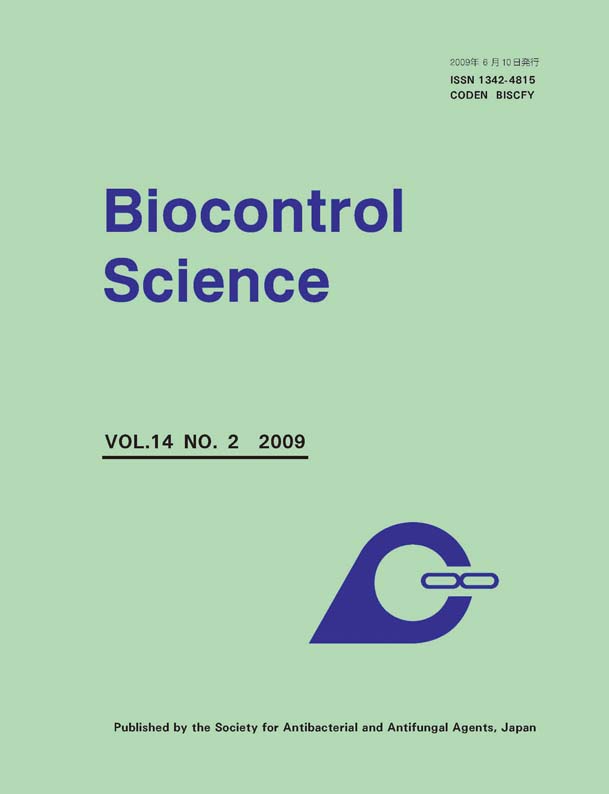Volume 14, Issue 2
Displaying 1-8 of 8 articles from this issue
- |<
- <
- 1
- >
- >|
Original papers
-
2009 Volume 14 Issue 2 Pages 49-54
Published: 2009
Released on J-STAGE: December 18, 2009
Download PDF (227K)
Note
-
2009 Volume 14 Issue 2 Pages 55-60
Published: 2009
Released on J-STAGE: December 18, 2009
Download PDF (207K) -
2009 Volume 14 Issue 2 Pages 61-64
Published: 2009
Released on J-STAGE: December 18, 2009
Download PDF (244K) -
2009 Volume 14 Issue 2 Pages 65-68
Published: 2009
Released on J-STAGE: December 18, 2009
Download PDF (1326K) -
2009 Volume 14 Issue 2 Pages 69-72
Published: 2009
Released on J-STAGE: December 18, 2009
Download PDF (355K) -
The Rapid Detection of Salmonella from Food Samples By Loop-Mediated Isothermal Amplification (LAMP)2009 Volume 14 Issue 2 Pages 73-76
Published: 2009
Released on J-STAGE: December 18, 2009
Download PDF (93K) -
2009 Volume 14 Issue 2 Pages 77-82
Published: 2009
Released on J-STAGE: December 18, 2009
Download PDF (915K)
Communication
-
2009 Volume 14 Issue 2 Pages 83-86
Published: 2009
Released on J-STAGE: December 18, 2009
Download PDF (661K)
- |<
- <
- 1
- >
- >|
